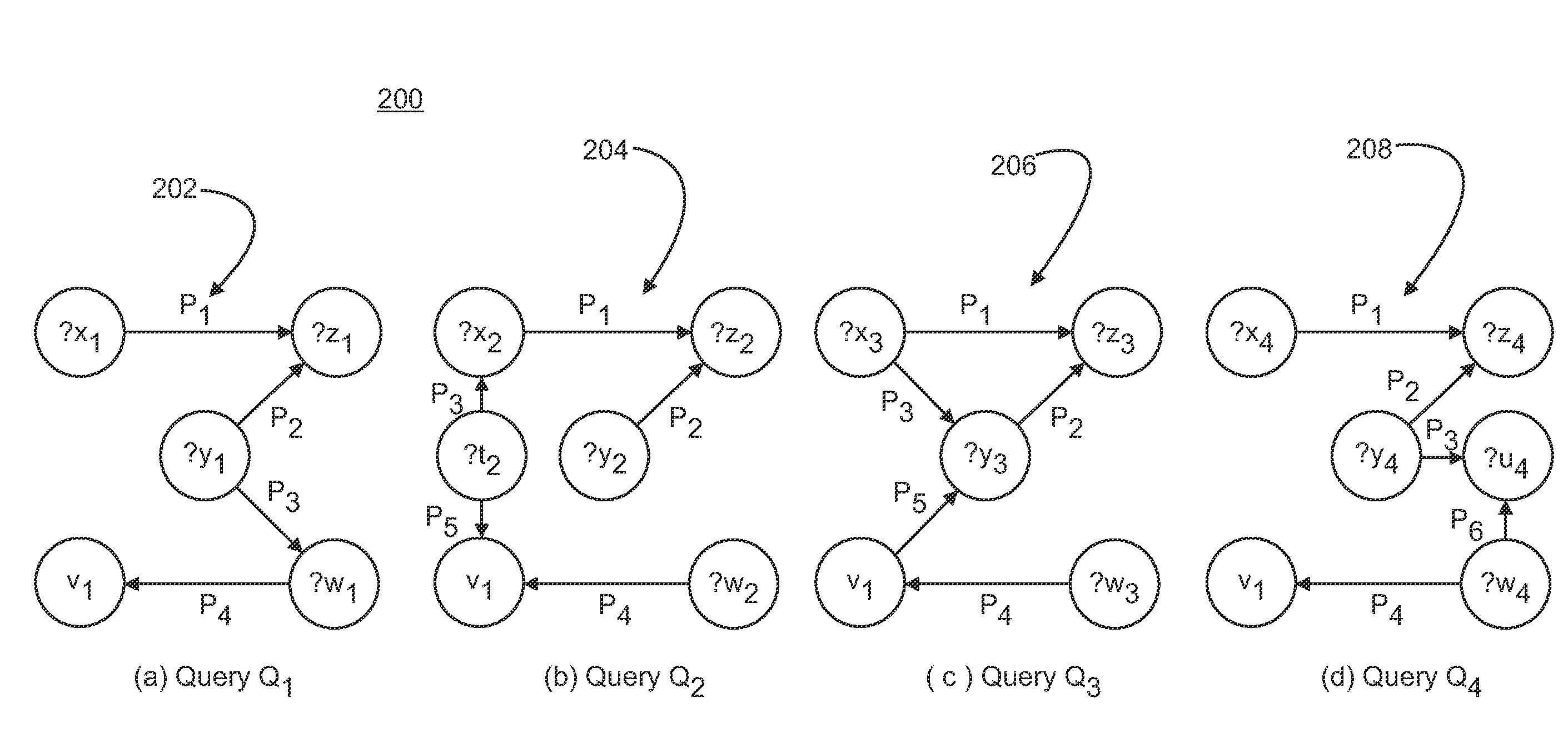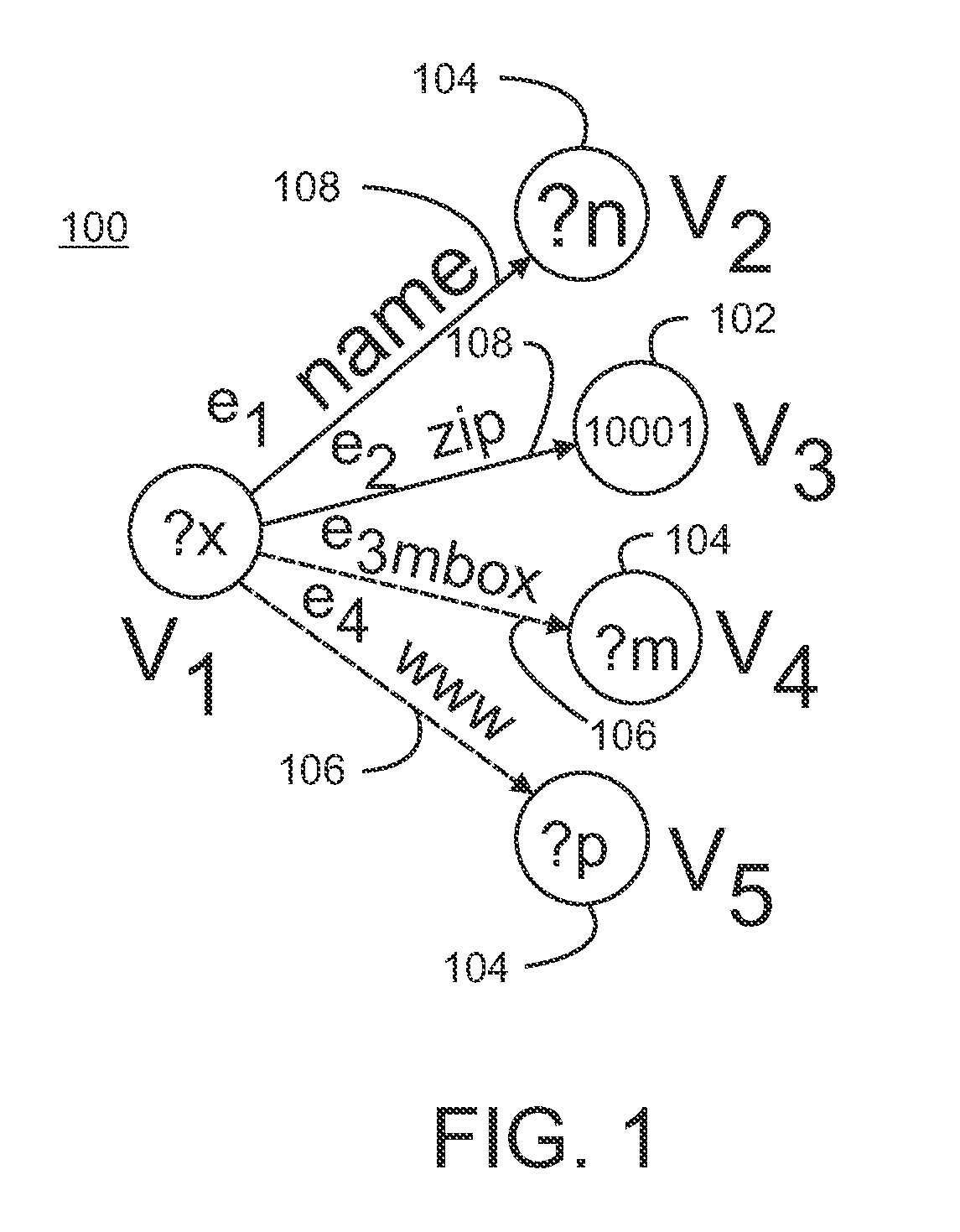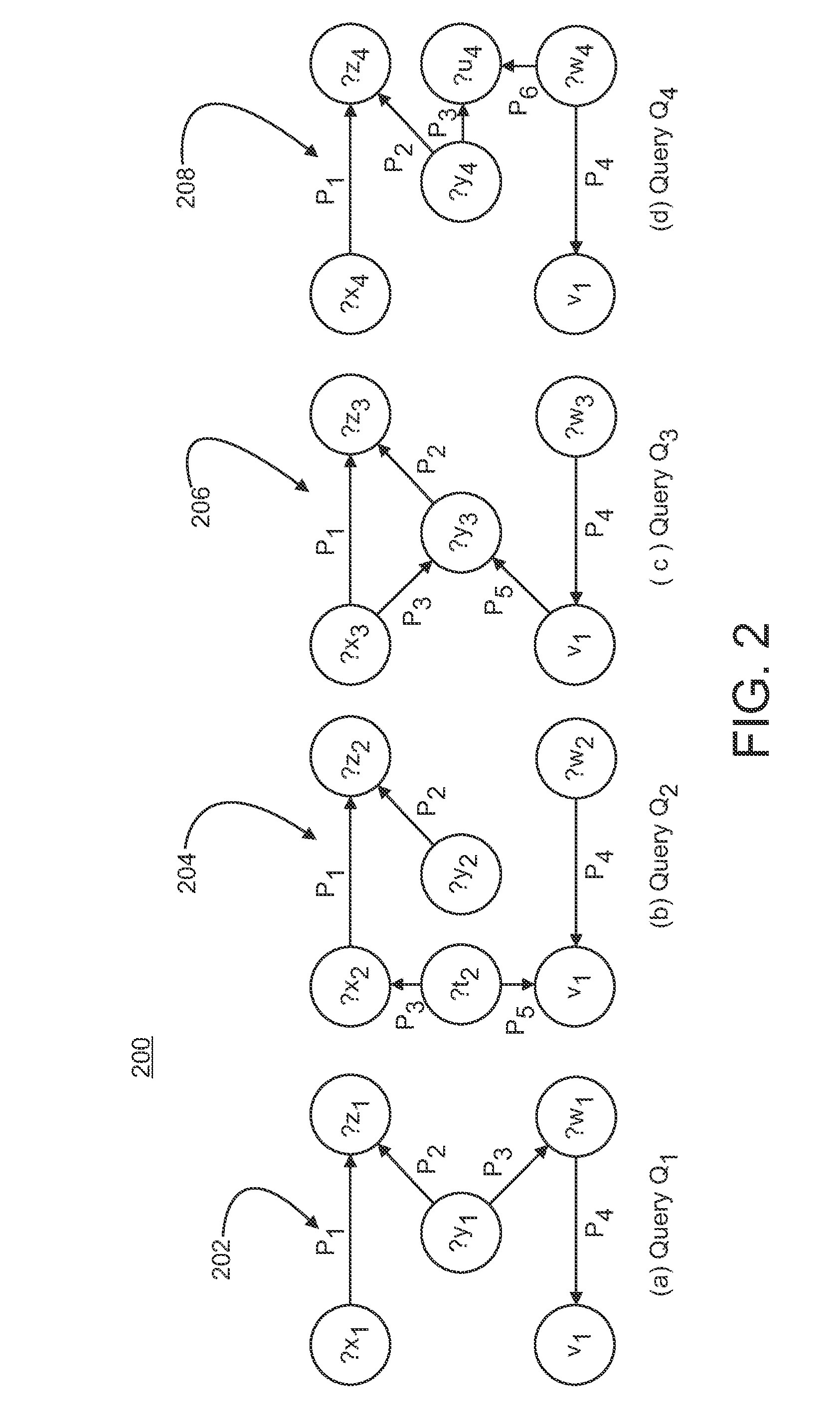Scalable Multi-Query Optimization for SPARQL
a sparql and multi-query technology, applied in relational databases, databases, instruments, etc., can solve the problems of high error rate, difficult to engineer practically into rdf query engines, complex stems, etc., and achieve efficient and effective optimizations, minimizing total query evaluation time, and high efficiency
- Summary
- Abstract
- Description
- Claims
- Application Information
AI Technical Summary
Benefits of technology
Problems solved by technology
Method used
Image
Examples
Embodiment Construction
[0013]SPARQL is a pattern-matching query language. There are two types of SPARQL queries: Q:=SELECT RD WHERE GP and QOPT:=SELECT RD WHERE GP (OPTIONAL GPOPT). In these queries, GP is a set of triple patterns, i.e., triples involving both variables and constants and RD is the result description. Given an RDF data graph D, the triple pattern GP searches on D for a set of subgraphs of D, each of which matches the graph pattern in GP by binding pattern variables to values in the subgraph. The result description RD for both query types contains a subset of variables in the graph patterns, similar to a projection in SQL. The difference between the two types is clearly in the OPTIONAL clause. Unlike queryQ, in the QOPT query a subgraph of D might match not only the pattern in GP but also the pattern (combination) of GP and GPOPT. While more than one OPTIONAL clauses are allowed, subgraph matching with D independently considers the combination of pattern GP with each of the OPTIONAL clauses...
PUM
 Login to View More
Login to View More Abstract
Description
Claims
Application Information
 Login to View More
Login to View More - R&D
- Intellectual Property
- Life Sciences
- Materials
- Tech Scout
- Unparalleled Data Quality
- Higher Quality Content
- 60% Fewer Hallucinations
Browse by: Latest US Patents, China's latest patents, Technical Efficacy Thesaurus, Application Domain, Technology Topic, Popular Technical Reports.
© 2025 PatSnap. All rights reserved.Legal|Privacy policy|Modern Slavery Act Transparency Statement|Sitemap|About US| Contact US: help@patsnap.com



